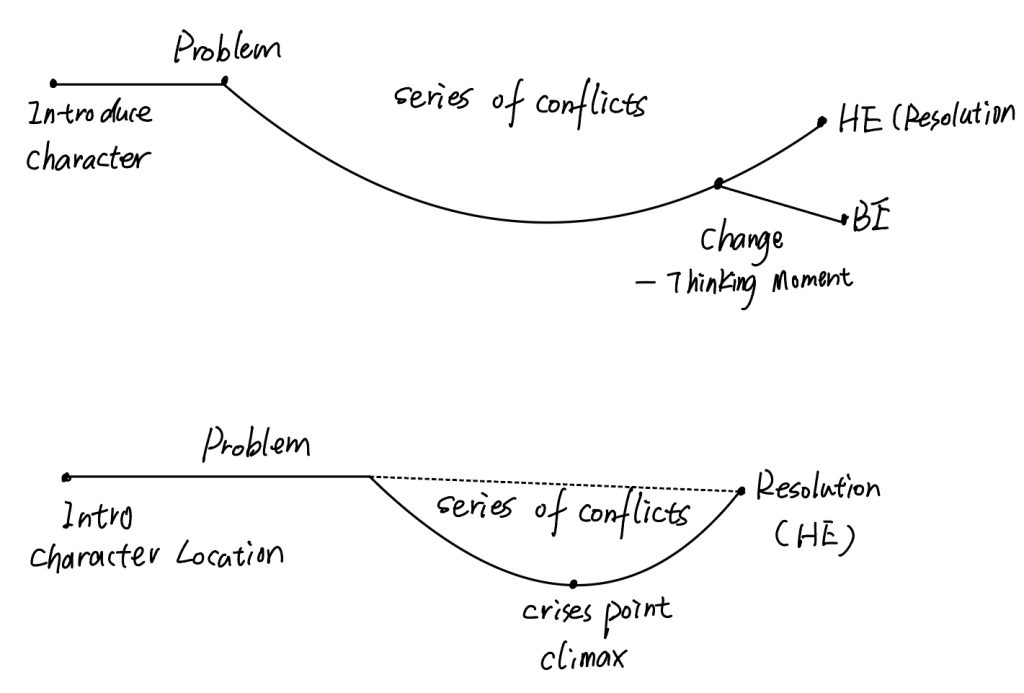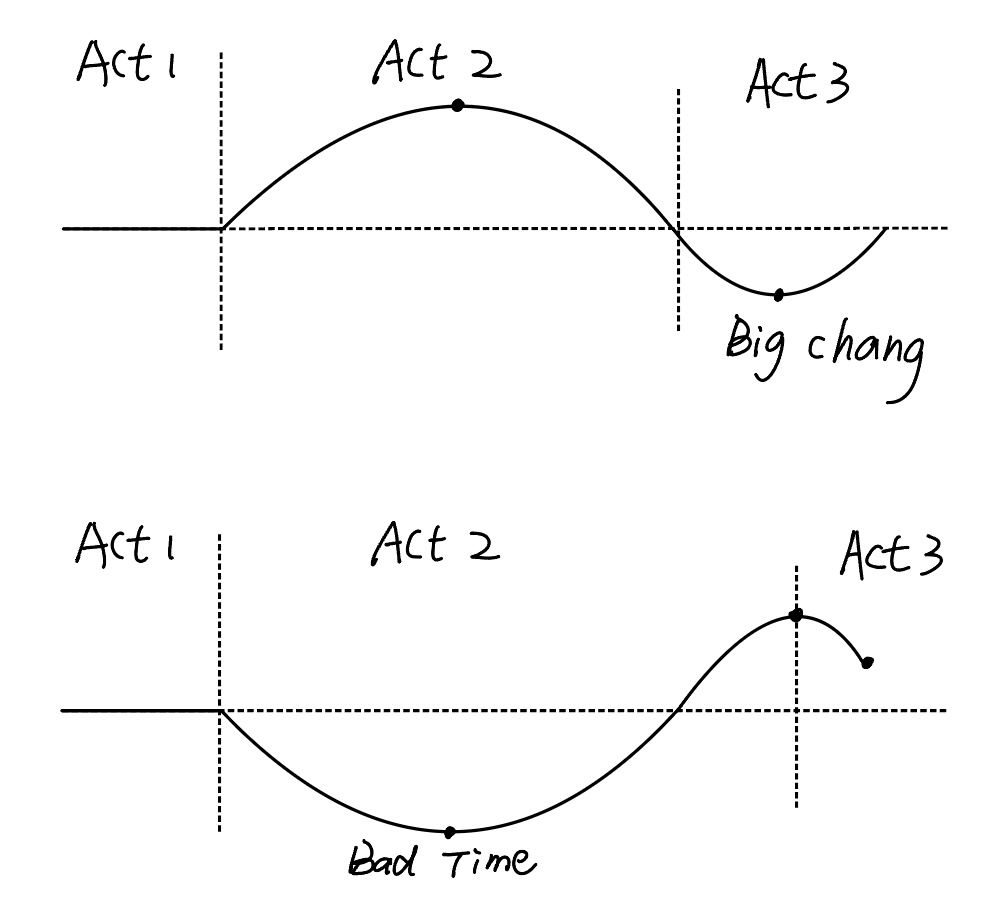Overview
As animators, storytelling is at the core of what we do. Whether you’re making a narrative, a documentary, or a commercial, short or long form, you are telling a story to your audience.
Before we take on a project, we need to make sure we have a firm understanding of what can be called the Four P’s: People, Place, Plot, and Purpose.
In these two lectures, we focused on how to create a character and several structural frameworks for storytelling. I have combined what I learned in class and some relevant information I found after class to put together the following.
1. People: Who is in the story?
Characters are what make us emotionally invested in a story. You’ll want your audience to root for your protagonists and against your antagonists. In order to achieve this goal, we need to know how to create vivid characters.
primary types of character
- Flat character / Static character
- Round character / Dynamic character
When making a story, we can incorporate round characters for more compelling storytelling. A round character often has many dimensions to their personality, undergoes personal growth and has motivations behind their actions. As readers gain such insights into the character, they feel more connected to their journey.
To create a round character, what we can do is make a Character Profile:
Character Profile
- Occupation
- Moral/ethical/religious beliefs
- Political stance
- Hobbies
- Quirks or eccentricities
- Likes/dislikes
- Fears/phobias
- Short and long-term goals
The best way to make your characters vivid is to let them have flaws. Characters with flaws quickly make the audience feel connected to them.
2. Place: Where does the story take place?
Location can add depth and intrigue to your characters and story, and can visually communicate a great amount of information in a short period of time. When choosing a location, Stillmotion keeps the following in mind:
- Relevance: Does it relate to your character or overall story?
- Comfort: Will the characters feel at ease and act naturally?
- Production friendly: Are the space, lighting, and noise level conducive to a good shoot?
3. Purpose: The meaning of your story
First, we need to know why we tell stories, which could be:
- To entertain
- To share our experience
- To reassure each other
- creating tradition and history
- you want to express yourself
Through this, we can find that “story” is the “idea”, which is the reason why am I telling the story. Based on it, we can confirm “The theme” (what thought you want to make the audience have), which can also called-mission statement.

The purpose is actually what you want your audience to catch from your story. Basically, it’s what you say to your audience.
4. Plot: What are the conflict and the journey?
A good story need
- One or two character
- Limited location
- A situation/the problem
- A bit of ‘argy bargy’
- An ending/resolution (what you want to say)
Every piece, even a commercial, needs a conflict to drive the narrative. That doesn’t mean every story needs a villain. Conflict and tension can come in many varieties.
The character’s struggle
- Character vs Character
- Character vs Environment (Setting/Community/Situation)
- Character vs Self
4 Storyline Structure


Reflection
After this class, I have a good understanding of how to build a story and the elements needed for a good story. And Robert’s lively way of teaching really captured my interest, he is a very good instructor. When I create my own stories in the future, I will try to create “soulful” stories from what I have learned above.
